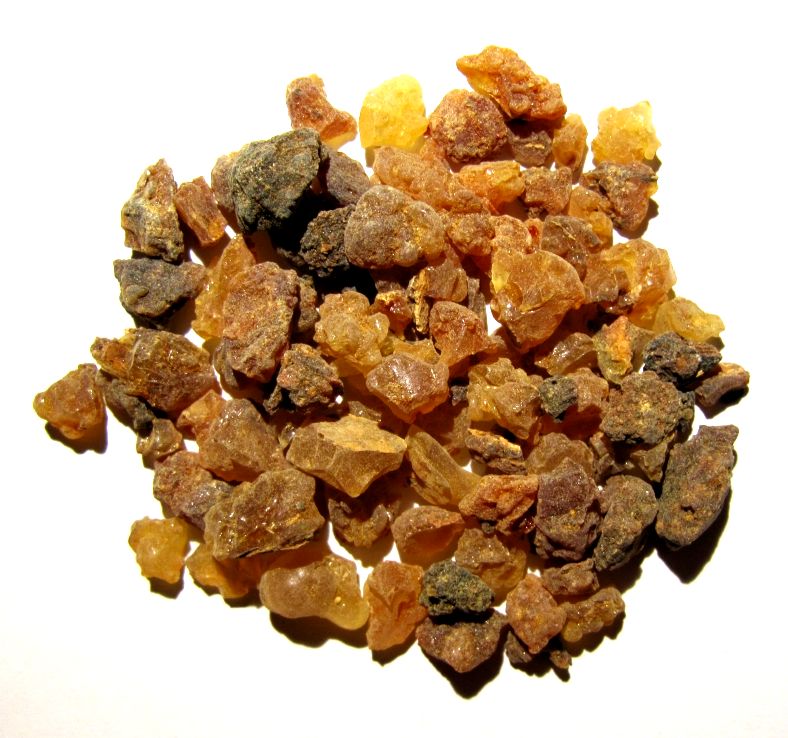Myrrh is the dried resin of myrrh shrubs (Commiphora myrrha). It has been used as an incense, perfume and medicine for millennia. The Egyptians used to embalm their dead. Its anti-microbial properties slowed decay and its sweet scent masked the scent of decomposition. Myrrh is mentioned many times in the Bible and was one of the gifts the magi brought to the infant, Jesus. It is used in both traditional Chinese medicine and Ayurvedic medicine. One of its modern uses is burning it in the form of incense to repel mosquitoes.
Myrrh shrubs are native to the Horn of Africa. They have since spread to desert areas of the eastern Mediterranean and Asia. The thorny shrubs need hot, desert conditions in full sun. Poor, well-drained soil is a must. Shrubs grow 12 to 15 feet high. The flowers are variously described as cream or yellow-red. They mature into small brown, ovoid fruit.
Myrrh is usually propagated from seeds in the spring or hard wood cuttings in the fall.
Myrrh shrubs naturally exude resin, especially after rains. Humans speed up the process by making cuts in the bark of two to three year old shrubs. Resin flows from these cuts. Naturally exuded resin is preferred over resin that results from cutting the bark. The resin is left on the shrubs for a few weeks to harden. The hardened resin starts out pale yellow, then darkens with age to a reddish brown, eventually developing white streaks.

